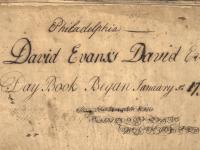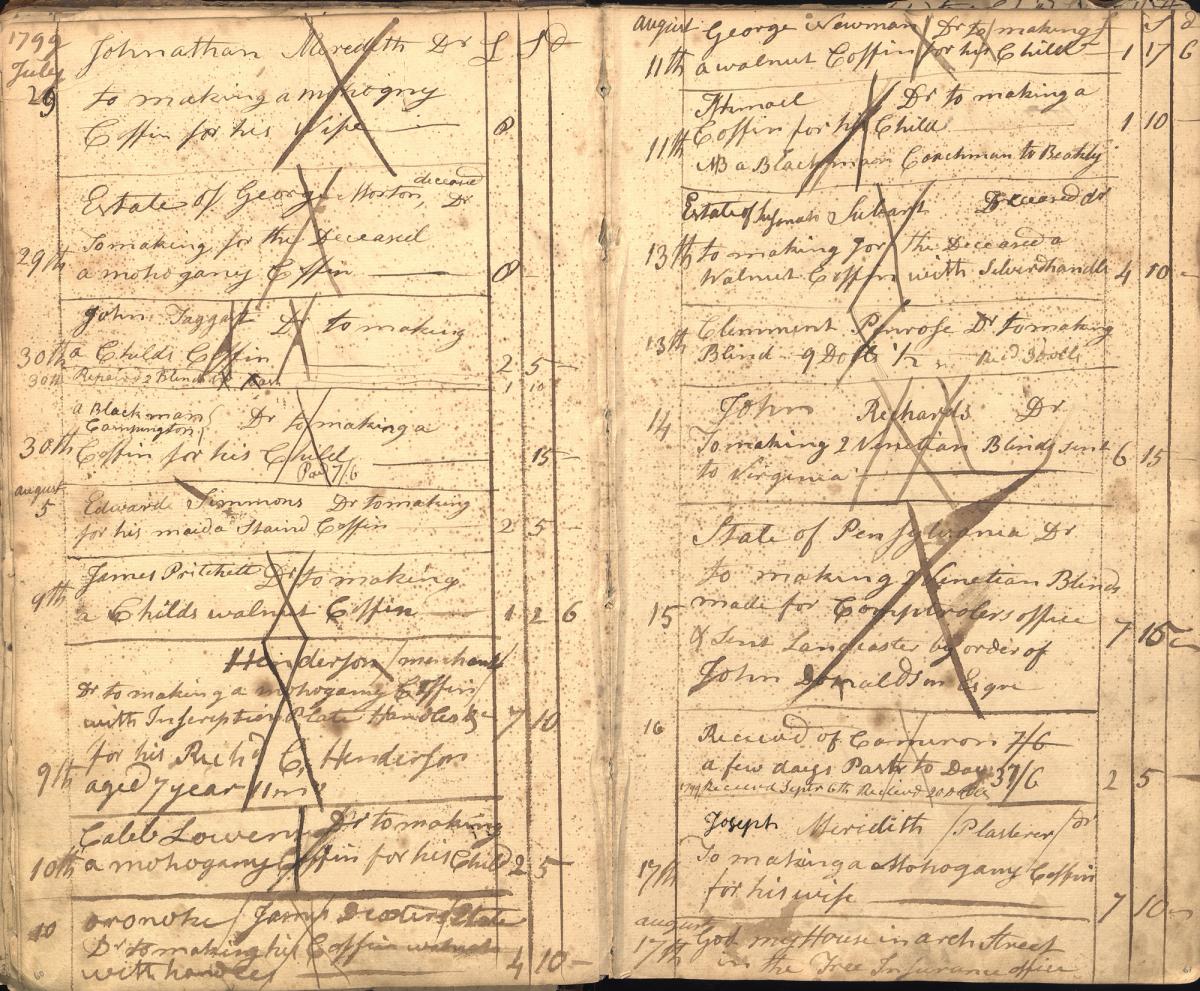For a number of years now, many historians–including myself–have worked with the National Park Service to discover more information concerning the life and times of James Oronoko Dexter, a former enslaved person owned by the Pemberton family While with the family, Dexter mainly worked as a coachman. He eventually gained his freedom and resided on North Fifth Street in Philadelphia, his home lying within the boundaries of the present-day Independence National Park. Late last year, the Philadelphia Inquirer published an article on the discovery of Dexter’s obituary by archaeologist Douglas Mooney. Although published by several newspapers at the time of Dexter’s death, including the Philadelphia Gazette & Universal Daily Advertiser (August 14, 1799), the death notice was lost to modern historians until recently.
Now, another unknown piece of Dexter biographical data has surfaced. Contained within the collections of the Historical Society of Pennsylvania are many records relative to Dexter’s life which have previously been published. However, an entry appearing within the Day-Books of David Evans, a leading 18th & 19th century Philadelphia cabinet-maker, has not released until now with this blog entry.
Evans’ Day-Books cover a period of time from 1796 until 1812. Like most cabinet-makers of the day he was also often asked to make coffins for the deceased as part of his profession. The images below reveal that for August 10th, 1799, Evans made a coffin for “Oronoko James Dexter,” out of walnut, “with handles.” (Click on the image to enlarge.)
James Oronoko Dexter (as his name is normally rendered) died at the age of seventy. According to an entry within the Diary of Elizabeth Drinker, for August 10th, 1799, she mentions how, “Oronoko is dead…many a pleasant ride have I taken with his Mistress under his care and protection, poor Noke.” The original diaries are also housed at the Historical Society of Pennsylvania.
There are still many unknowns concerning the life of James Oronoko Dexter. For example: where was he born? How did he end up in Philadelphia to begin with? Why does his obituary refer to him as “Noka Kinsey,” rather than as Dexter? Also, his death notice mentions a brother who was “eighty years of age,” whose name, origin and residence are also not identified. Though much mystery still endures, the search continues in an attempt to solve the life events of a former slave and free African American in early Philadelphia. Slowly but surely, the life of this relatively unknown American is unfolding and revealing much about the early life of African Americans in the City of Brotherly Love in the process.



